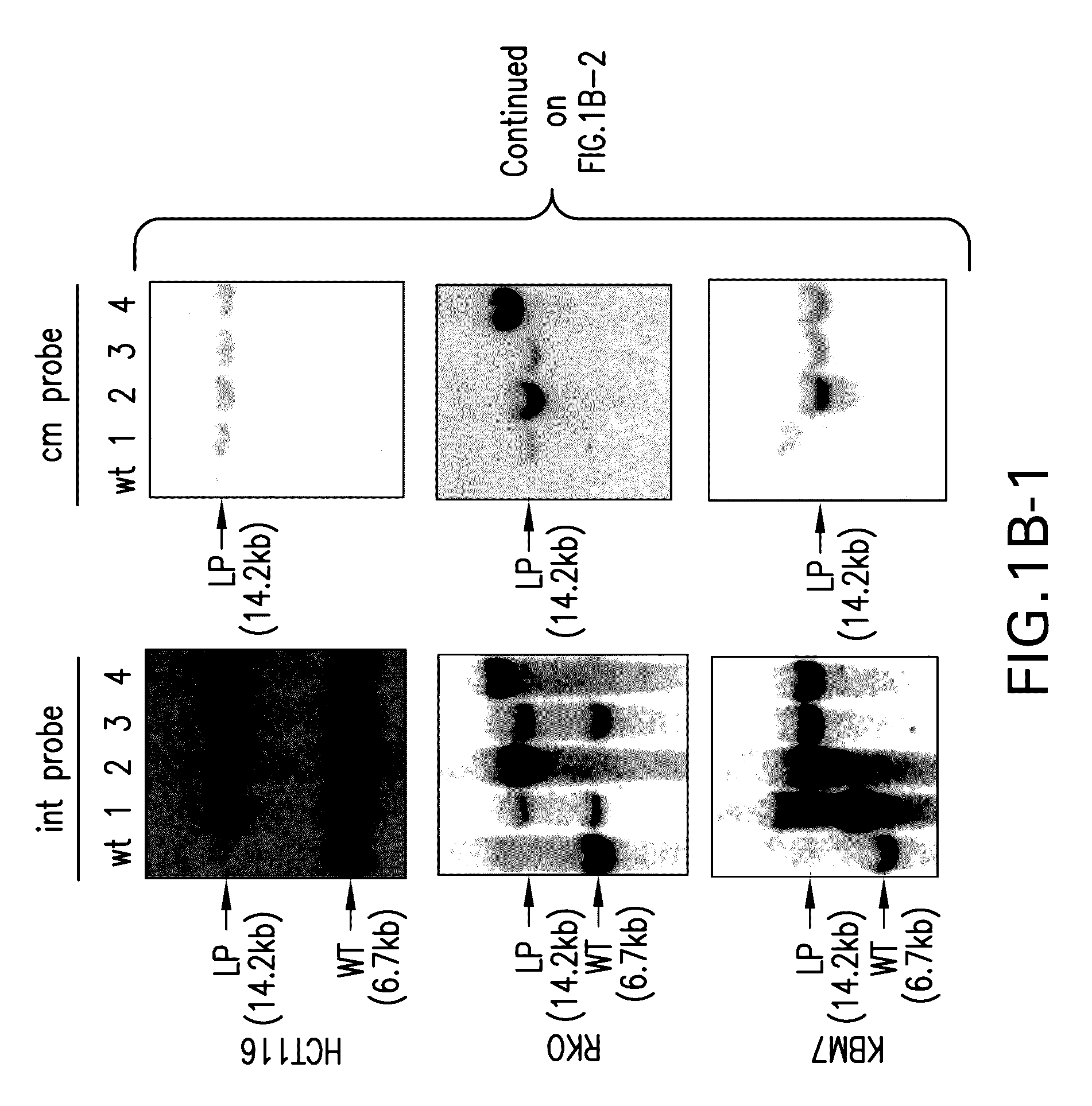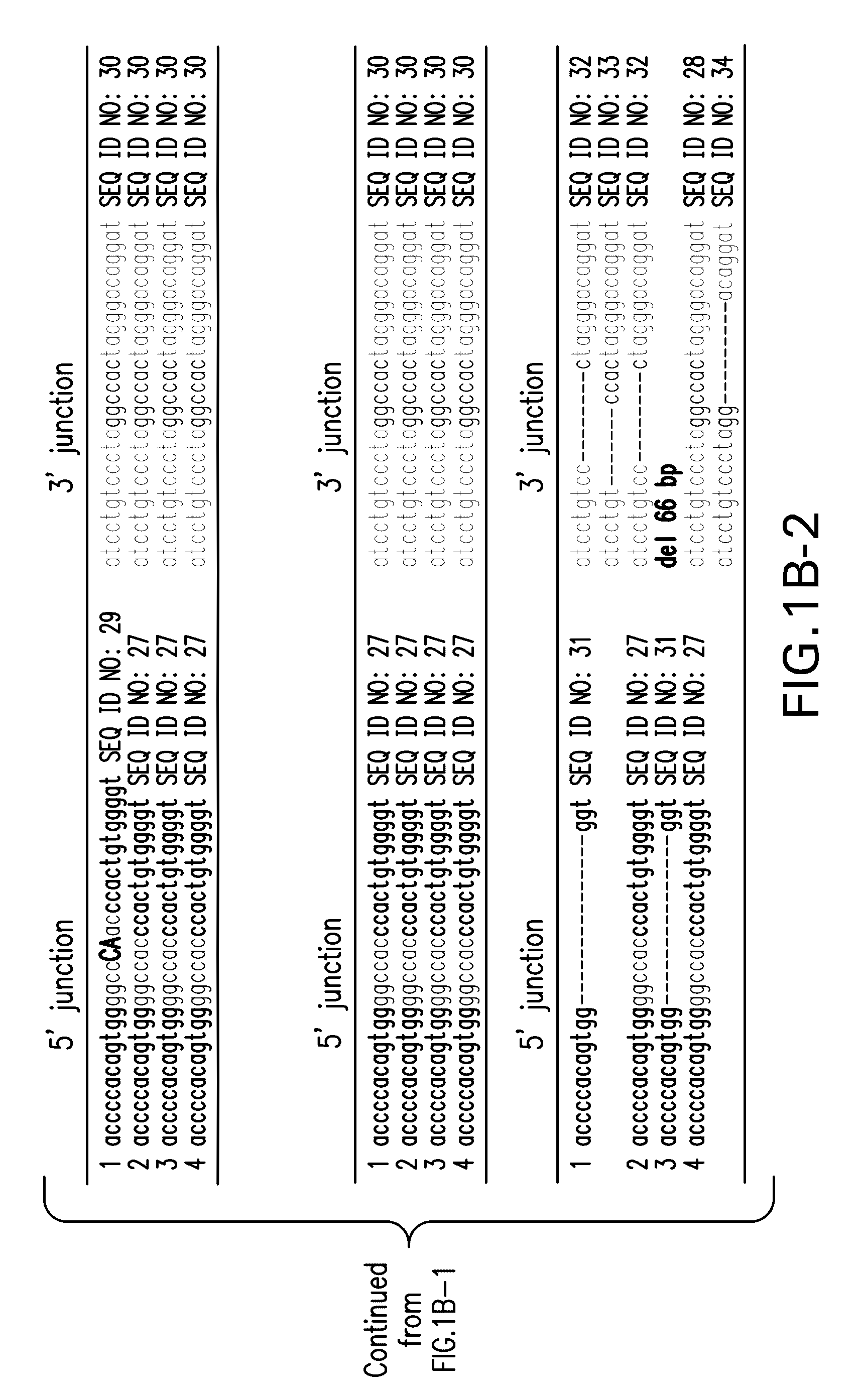Methods of nuclease-based genetic engineering
a technology of nuclease and genetic engineering, applied in the field of nuclease-based genetic engineering, can solve the problems of not being further explored, difficult, if not impossible, to achieve, and achieve the effect of efficient and precise gene targeting
- Summary
- Abstract
- Description
- Claims
- Application Information
AI Technical Summary
Benefits of technology
Problems solved by technology
Method used
Image
Examples
example 1
Precise End-Joining by ObLiGaRe
[0079]In order to directly ligate an exogenous DNA fragment into the genome, we initially introduced ZFN binding sites in a donor plasmid with the same orientation as in the genome. However we found this strategy often yielded unpredictable products presumably because the same ZFN binding sites were produced after ligation which could then be repetitively digested, a process that could stimulate end recessing before joining (Pruett-Miller et al., 2008). One essential requirement for ZFN-mediated site-specific digestion using obligated heterodimers is that a pair of ZFNs needs to form heterodimers through the modified Fokl nuclease domain after binding to their targeted DNA sequences on the opposite strands. We thought that if we altered the orientation of the genomic ZFN recognition sequences in the donor plasmid we could lock the ligation product in a palindrome of identical half ZFN recognition site which would be no longer sensitive to the same obli...
example 2
Mechanism of ObLiGaRe
[0086]We speculated that ObLiGaRe might be mediated by NHEJ since it dose not require any homology between the donor and the target. To test this hypothesis, we inserted a defective GFP (DGF) harboring a mouse Nras ZFN recognition site at the AAVS1 locus by HR in HCT116 cells (FIG. 5a). We chose one of the correctly heterozygous targeted clones as a reporter (Clone#10 FIG. 7A-7C). We co-transfected Nras ZFNs with 2 plasmids to measure ObLiGaRe vs. HR simultaneously. One had 500 bp homology arms to the DGF and could reconstitute functional GFP by HR; the other had a modified Nras ZFNs site 5′ to a promoterless T2A-mCherry cassette which would lead to mCherry expression upon insertion by ObLiGaRe (FIG. 5a). We FACS sorted cells and detected 6 times more mCherry positive cells than GFP positive cells in the reporter line but not the parental line (FIG. 5b). All clones derived from the mCherry fluorescent cells presented precise end joining of the mCherry with the d...
example 3
Cell Culture and Transfections
[0087]HCT116 and RKO (American Type Culture Collection, VA) were cultured in McCoy's 5A medium (Life Technologies, CA) supplemented with 10% fetal bovine serum (Life Technologies, CA). C2C12 (American Type Culture Collection, VA) were cultured in Dulbecco's modified Eagle's medium supplemented with 10% fetal bovine serum (Life Technologies, CA). KBM7 cells, were cultured in IMDM Glutamax (Life Technologies, CA) supplemented with 10% fetal bovine serum. HCT116, RKO, C2C12 and MEFs cells were plated in 6-wells plates (50-80% confluence) and transfected with Lipofectamine LTX according to manufacture's instructions. Briefly, 2 g of ZFNs plasmid and 0.5 g of ObLiGaRe vector were mixed with 12 l of Lipofectamine LTX reagent and co-transfected into 5×105 cells. 2 days after transfection cells were transferred to 15 cm plates and subject to either puromycin (Life Technologies, CA) selection (0.5 g / ml) or G418 (Life Technologies, CA) selection (100 g / ml) the fo...
PUM
| Property | Measurement | Unit |
|---|---|---|
| nucleic acid | aaaaa | aaaaa |
| size | aaaaa | aaaaa |
| frequency | aaaaa | aaaaa |
Abstract
Description
Claims
Application Information
 Login to View More
Login to View More - R&D
- Intellectual Property
- Life Sciences
- Materials
- Tech Scout
- Unparalleled Data Quality
- Higher Quality Content
- 60% Fewer Hallucinations
Browse by: Latest US Patents, China's latest patents, Technical Efficacy Thesaurus, Application Domain, Technology Topic, Popular Technical Reports.
© 2025 PatSnap. All rights reserved.Legal|Privacy policy|Modern Slavery Act Transparency Statement|Sitemap|About US| Contact US: help@patsnap.com



